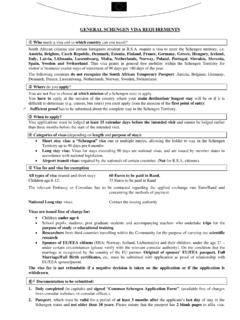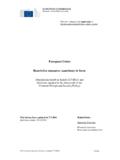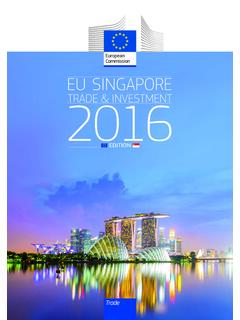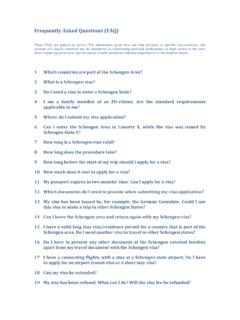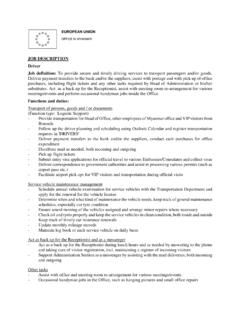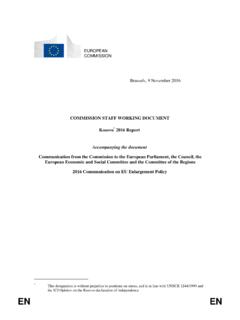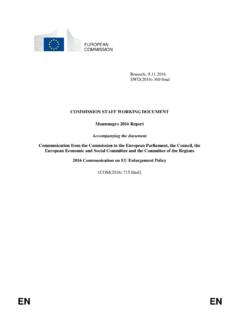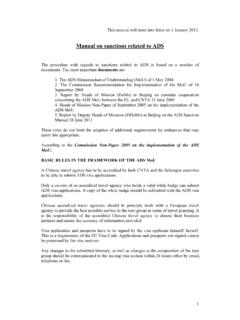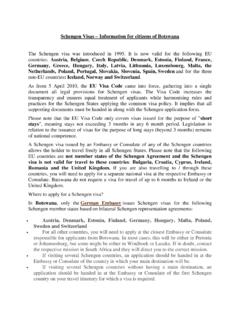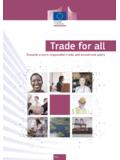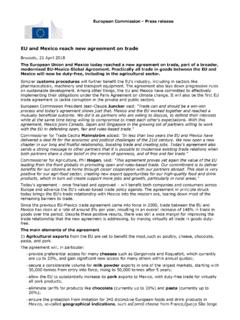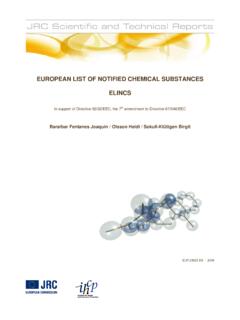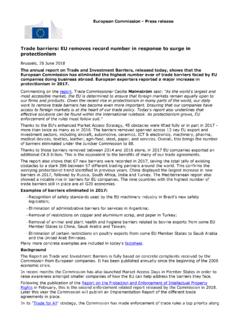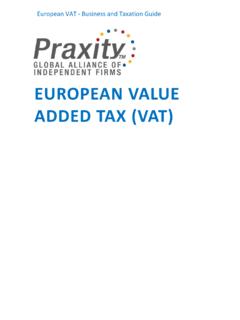Transcription of Factsheet: EU trade policy and Africa's exports
1 EU trade policy and Africa's exports The EU is Africa's main customer especially for food and manufactured products. Africa's exports to the European Union (EU) amounted to more than 116 billion in 2016. Europe is by far Africa's largest export market (35% of Africa's exports ), followed by africa itself (18%), China (11%), the USA (8%) and India (7%).1 The EU is also the main market for African food and manufactured products. Both categories accounted for 51% of Africa's exports to the EU in 2016 (Food and beverages: 16%, Manufactures: 35%) whereas raw materials accounted for 49%.2 exports of food and manufactured products to the EU increased constantly since 2013, respectively by +23% and +17%. Africa's exports of raw materials to the EU decreased in recent years, due in particular to decrease in oil prices.
2 35% The share of total African exports which the EU accounts for. 116 bn The value of Africa's exports to the EU in 2016. +23% Increase in African food and beverages exports to the EU, 2013-2016 +17% Increase in African manufactures exports to the EU, 2013-2016 1 Source: UNCTAD Data Center, November 2017, SITC categories. 2 Source: Eurostat, SITC categories. - 20 40 60 80 100 120 EUAfricaChinaUSAI ndiaAfrica's exports by partner and by product category, 2016 (in bn USD) Raw materials, oils, fuels &chemicalsFood & beveragesManufactures EU trade policy and Africa's exports Most African countries are exporting to the EU on a duty-free or preferential basis. EU trade policy with africa Five ways of promoting African exports Type and name of agreement or scheme Bilateral EU agreements Unilateral EU scheme 1.
3 Economic Partnership Agreement (EPAs) 2. Free trade agreements (FTAs) 3. Everything But Arms (EBA) 4. Generalised Scheme of Preferences Plus (GSP+) 5. Generalised Scheme of Preferences (GSP) Target countries Sub-Saharan africa North africa Least-developed countries (LDCs) Developing countries3 Developing countries Type of access offered Duty- and quota-free access (except arms) Duty- and quota-free access (except some agro-food/fisheries tariff lines) Duty- and quota-free access (except arms) Duty-free access for over 66% of products Lower EU tariffs on 66% of products Number of countries covered 12 countries (+15 signatories) 4 countries 32 countries 1 country 2 countries Under Economic Partnership Agreements or the Everything-But-Arms scheme, most African countries enjoy duty-free and quota-free access to the EU market in dark green below.
4 Free trade Agreements with North African countries also offer duty-free quota-free access for most goods. A few other countries benefit from preferential schemes in light green below. 3 Vulnerable low and lower-middle countries in terms of their economies diversification and import volumes. In return, beneficiary countries must ratify and effectively implement 27 core international conventions. EU trade policy and Africa's exports For African exporters, the EU is the world's most open market. The EU offers African countries by far the most open access to its market of any major economy through Economic Partnership Agreements, Free trade Agreements, or preferential schemes. Other major trade partners of africa , like the USA, China and India, also have trade schemes in place which improve access to their markets for African countries: The USA: o has a free trade agreement with one African country Morocco o offers duty-free access on fewer products from LDCs than the EU does o has a unilateral initiative called the African Growth and Opportunity Act (AGOA) which offers 44 African countries improved access to the US market.
5 China and India: o don t offer any African country fully-free access to its market o have a unilateral scheme for least-developed countries o have no free trade agreements with any African country. Share of all products from africa which can enter major economies duty-free4 (% of duty-free tariff lines) Scheme or agreement Economy EU USA China India Schemes for least-developed countries 100% except arms 82% 97% 94% Unilateral schemes for developing countries (GSP) 57% + reduced tariff lines5 68% No schemes Other unilateral schemes: GSP+ (EU), AGOA (USA) 89% 84% Bilateral agreements (EPA/FTA6) 100% except arms Almost no agreements in place7 Conclusion The EU is the most open market for African exports . Most African countries export to the EU on a duty-free quota-free basis through EPAs, Everything-But-Arms or FTAs, or enhanced market access conditions.
6 Other trading partners offer less beneficial conditions for Africa's access to their markets. This has led to a regular increase of exports of food and manufactured products from africa to the EU. Europe is by far Africa's largest export market, and its main customer of food and manufactured products. EPAs are a decisive step for African countries, to further improve market access conditions and diversify exports beyond commodities. The EU is also supporting the emergence of regional value chains and the reinforcement of the capacity of African producers to meet market 4 Source: World trade Organisation, Database on Preferential trade Arrangements, Extracted on 10 November 2017. 5 The EU's GSP reduces duties on 66% of tariff lines (31% become duty free, 35% are reduced but not duty-free).
7 Another 26% of tariff lines are already duty-free for all WTO members (MFN). So for a GSP beneficiary, 57% of tariff lines (31%+26%) are duty-free, and another 35% reduced. 6 Market access is slightly lower for South africa , and is duty free quota free for FTAs with North African countries except for some agro-food and fisheries tariff lines. 7 US has a trade agreement with Morocco, which provides for reciprocal duty-free access. Source: World trade Organisation, Regional trade Agreements Information System, Extracted on 10 November 2017. 8 See trade for All Communication, October 2015.
